After a last-place 2021-22 season, the Montreal Canadiens secured the fruits of their labor and suffering with an NHL Draft Lottery Win. Almost everyone believes Shane Wright is the logical choice with the first-overall pick, but that’s where the agreement ends as to what’s in store for the Habs moving forward.
The rebuild clearly isn’t exactly complete yet, especially with Carey Price’s future up in the air. So, if their goaltending is already a huge question mark, maybe the Canadiens actively tank to try draft one of the big three (Connor Bedard, Matvei Michkov, and Adam Fantilli) in 2023?
On the other hand, reports say the Canadiens are going to make a free-agency splash. While general manager Kent Hughes has gone on record saying he won’t be in the market for a “five-star free-agent player,” the reports still suggest the Habs themselves are in no mood to stay at the bottom of the standings for a second straight season in 2022-23. But how likely is a playoff spot?
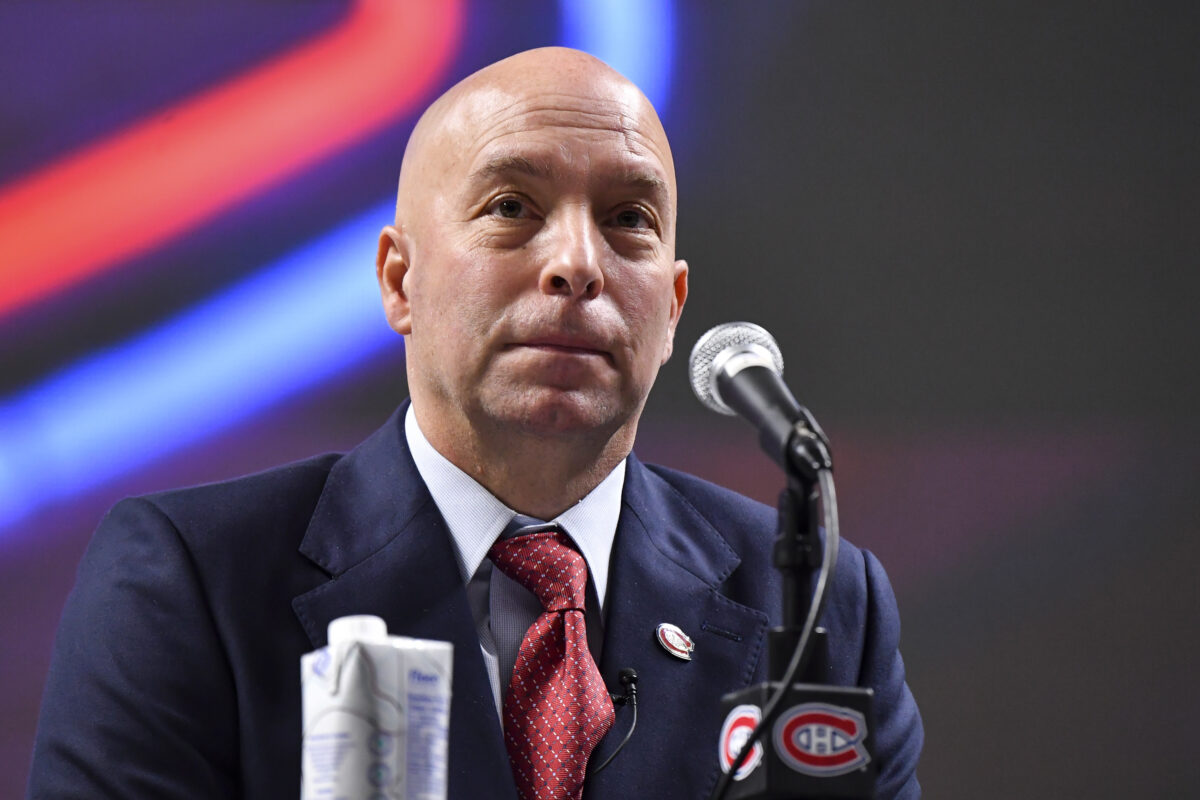
It’s at least possible, as the Canadiens have shown several times over the course of their history. Five to be exact. That’s the number of times they’ve bounced back from a legitimately horrible campaign to at the very least make the playoffs. Can they do it again?
You be the judge. Here they are:
1915-16 Montreal Canadiens
The Montreal Canadiens won their first-ever Stanley Cup in 1916, led by Didier Pitre and Newsy Lalonde up front. Pitre beat out eventual-Canadien Joe Malone for the scoring title with 24 goals and 15 assists. Lalonde meanwhile led the league in goals with 28, so the Habs had a lot of scoring power, needless to say.
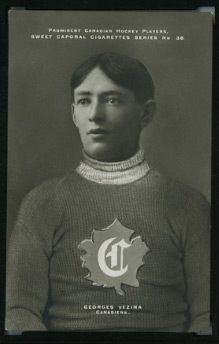
Backstopped by Georges Vezina, the Canadiens were an undeniably strong team overall. They led the National Hockey Association (NHA) in the standings for a reason, capturing the O’Brien Cup as a result. They then beat the Portland Rosebuds of the Pacific Coast Hockey Association to win Lord Stanley’s mug.
However, the previous season, it was a completely different story. The Canadiens finished last in the six-team league, at 6-14, the inverse record of the Ottawa Senators, who won the O’Brien Cup instead.
Admittedly, it was a similar Habs lineup that season, with Lalonde appearing in limited action due to a contract dispute. Nevertheless, the core of the team remained intact, suggesting the modern-day Habs don’t necessarily need to rebuild… just manage to keep their star players around all season. That obviously isn’t what happened in 2021-22. Injuries, man.
1926-27 Montreal Canadiens
Another season the 2021-22 Canadiens can relate to in Habs history? The 1925-26 (NHL) campaign, in which they lost Vezina, their projected starter, in the first game of the season. Vezina sadly contracted tuberculosis and didn’t return the rest of the season, passing away soon thereafter. The Canadiens themselves couldn’t recover from a goaltending perspective, leading to one of the worst seasons in team history at 11-24-1.
The Canadiens stabilized their goaltending in 1926-27, leading the league in goals against on the strength of play of future Hockey Hall of Famer George Hainsworth in his debut season (during which he fittingly won the inaugural Vezina Trophy). They also employed the services of Howie Morenz and Aurel Joliat up front for the record. On the blue line, Herb Gardiner won the Hart Memorial Trophy as league MVP.
Overall, the Canadiens jumped 35 points in the standings season over season, earning 58 points to place second, just behind the Senators, against whom they lost in Round 2. No shame in that though, as the Senators also beat the Boston Bruins in the Final to win it all.
1936-37 Montreal Canadiens
The 1936-37 Canadiens season marked both Howie Morenz’s return to the Habs and the tragic end to his famed career. Morenz had been traded to the Chicago Black Hawks in 1934. Following a detour with the New York Rangers, with whom he struggled, he returned to the Habs, who bought his contract back.
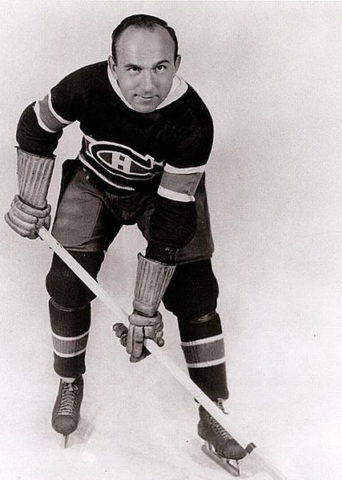
After scoring just six goals and 21 points in 42 games in 1935-36,, Morenz rediscovered his offensive touch somewhat with the Habs. He scored 20 points in 30 games when he infamously broke his leg in a game against the Black Hawks. That led to the all-time great developing blood clots and surrealistically passing away as a result.
Nevertheless, despite the tragedy, 1936-37 marked a sharp turnaround in team performance. In 1935-36, the Habs finished last in the entire league at 11-26-11, having also scored the fewest (82) and given up the most goals (123).
The poor showing also prompted the return of Stanley Cup-winning coach Cecil Hart, who had been fired after a dispute with ownership a few seasons earlier. Defenseman Babe Siebert got acquired to strengthen the defense and was named captain, eventually earning Hart Memorial Trophy and All-Star honors.
Needless to say, seeing as the 1936-37 Habs placed on this list, the changes made a difference. The Canadiens won the Canadian Division in the regular season. They ultimately lost to the Detroit Red Wings in the playoffs, but the 21-point jump in the standings they earned relative to in 1935-36 was noteworthy enough to rank.
2012-13 Montreal Canadiens
Montreal Canadiens fans probably remember 2012-13 for a variety of reasons. It was a 48-game lockout-shortened season, during which P.K. Subban earned the Norris Memorial Trophy after briefly sitting out during a contract dispute. The season also marked the debuts of several Canadiens, including current-captaincy-candidate Brendan Gallagher and ex-Hab Alex Galchenyuk.
Now Galchenyuk’s tenure with the Canadiens had its up and downs and his career is in relative limbo right now, having literally played for seven different teams (two stints with the Arizona Coyotes) over the last five seasons. However, back in 2012-13, he was a much-hyped soon-to-be 19-year-old making his NHL debut after having been selected third overall at the previous NHL Entry Draft.
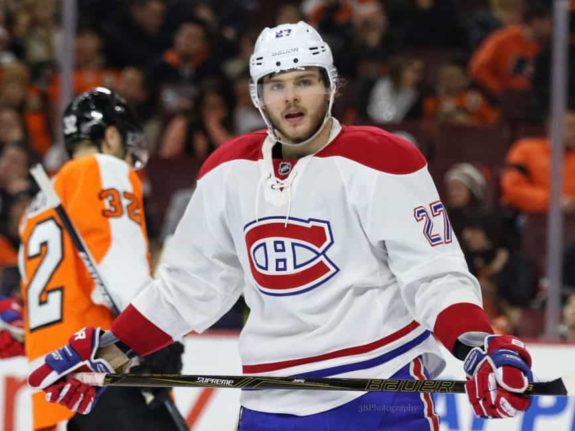
So, for him to be selected that high, obviously the Canadiens would have had a fairly painful 2011-12 season. And was it ever. The Canadiens finished third from last in the standings with a 31-35-16 record, due in large part to injuries, with a second-ranked 436 man-games lost, including most of defenseman Andrei Markov’s season (torn ACL).
The season-long struggles prompted a major shake-up, with then-general manager Pierre Gauthier getting replaced by Marc Bergevin. Bergevin eventually installed his own head coach, Michel Therrien, to replace Randy Cunneyworth, who had been filling in for the fired Jacques Martin the previous season.
Related: Canadiens GM Showdown: Bergevin vs. Gauthier
Say what you want about Bergevin’s overall tenure, but the improvement following his hiring was immediate, as the Canadiens captured the Northeast Division championship with a sterling 29-14-5 record.
True, they lost in the first round, upset by the Senators, but, with some tweaking on the part of Bergevin, they reached the Eastern Conference Final in 2013-14. Credit where it’s due, even if those teams had largely been built by his predecessors, Bergevin knew which button to press early on in his managerial career. Even if that button was akin to the PA button a grocery checkout clerk presses, calling for a Price check.
2020-21 Montreal Canadiens
By 2020, that wasn’t so much the case anymore, hindsight being what it is and all. Under Bergevin, the Canadiens had been on the verge of missing the playoffs for the fourth time in five seasons when the global pandemic hit.
When the dust settled and the NHL resumed play, the Habs drew into a desperately conceived play-in round for a shot at a playoff spot, despite a 31-31-9 record. They didn’t deserve it, to be blunt, with the lowest amount of wins of all the 24 teams to start playing again. They also had a -9 goal differential on the season. But that’s playoff hockey. Anything can happen. Anything did.
By beating the Pittsburgh Penguins 3-1 in their best-three-out-of-five series, the Canadiens officially made the playoffs, making them the only “before” shot on this list to make them. The “after” was well worth letting this entry in on a technicality.
Based largely on the Canadiens’ sudden strength down the middle, expectations had shifted, even though the Canadiens lost to the Philadelphia Flyers in Round 1. The Habs had Nick Suzuki, Jesperi Kotkaniemi, and Phillip Danault, not to mention an aging Carey Price in net and a practically decomposing Shea Weber on the back-end.
The time was now to make a run of it. Bergevin went to work with perhaps his most impressive offseason to date, acquiring forwards Josh Anderson and Tyler Toffoli, defenseman Joel Edmundson and back-up goalie Jake Allen to keep Price rested.
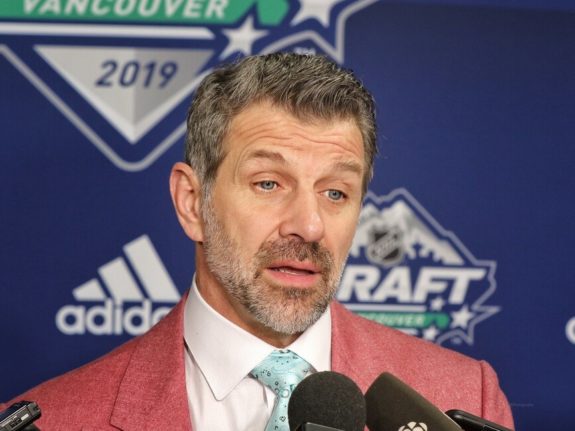
In the end, Bergevin constructed a team that rode a 5-0-2 start to the season to a playoff spot, despite struggling down the stretch. Even though they really just barely made it, as was the case the previous season, anything can happen.
The Canadiens impressively came back from a 3-1 series deficit in Round 1 to upset the Toronto Maple Leafs, when all seemed lost. From there, everyone seemed to peak at the same time, powering the Habs to their longest playoff run since their 1993 championship, culminating in a Stanley Cup Final appearance.
Sure, the Canadiens ultimately lost 4-1 to the powerhouse Tampa Bay Lightning, but the Cinderella run on which they went captured the imaginations of hockey fans everywhere. They dared to dream. For all intents and purposes, the Habs delivered, proving analysts everywhere wrong, up until the clock struck midnight in Round 4.
The subsequent 2021-22 edition of the Canadiens was always going to struggle taking several factors into consideration. For example, the move back to Division of Death (the Atlantic), Shea Weber’s “retirement,” and Price’s season-long absence. However a last-place finish was unforeseen by just about everyone, especially after they just reached the Stanley Cup Final.
It points to just how much can change over the course of a single season. A single offseason really. So, the Canadiens can be competitive in 2022-23. It’s just a matter of Hughes, executive vice president of hockey operations Jeff Gorton and owner Geoff Molson coming to a consensus with regard to the direction to take. And, yeah, a lot of things going (W)right.
A debate worth having though is what’s right for the team’s long-term future. It may not necessarily be a one-season turnaround in 2022-23.
